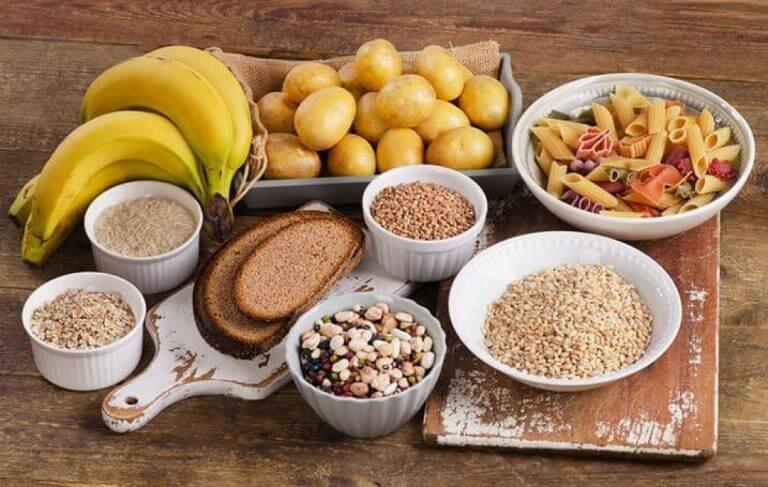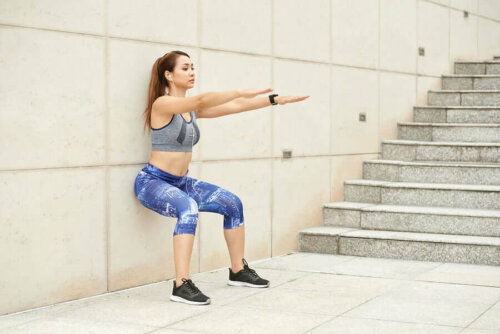Five Effective Exercises to Get Rock Hard Abs

Are you not sure what to do about your sagging stomach? Your abdomen is, without a doubt, one of the most difficult places to get rid of fat. So, here we’ll tell you how to get rock hard abs.
However, the main reason why people don’t see results has nothing to do with their diet or exercise routine. These are obviously part of the process, but the most important aspect when it comes to getting hard abs is your mental attitude.
Focus on a goal
The first thing you have to do is:
- Decide what it is that you want and what you have to do to achieve it
- Reassure yourself and reiterate that you’re ready to do it
- Establish goals that you want to reach
- Look to the future, visualize yourself achieving your goals. Believe in yourself!
- Stop procrastinating! It’s time to start…
Food you should eat

Seeing thousands of diets online, in magazines, and hearing about them from friends is nothing new. The problem with these diets is that the majority of them lack macronutrients, meaning: proteins, carbohydrates and fats. Because of this, the body starts to experience deficiencies.
What happens is that the person loses weight very quickly because they’ve used up all of the glycogen deposits in their muscles. These are the carbohydrates that are found in the muscular structure. Consequently, they weigh less, but their muscles will be flat and weak and they won’t have hard abs.
However, according to a study published in The BMJ, eating a diet that limits fat content produces limited but significant improvements in body weight and, mainly, in several health indicators. This means that it could be a healthier and more effective plan, but it’s still recommended to make this diagnosis with a nutritionist.
Must-have foods
As we said, you should ideally plant your diet with a specialist, taking into account your individual needs and characteristics. Just as a guide, here are some foods you should include in your diet to have the nutrients the body needs.
- Eggs: they’re an excellent source of protein, according to a WebMD article
- Bananas: as detailed in research published in the Journal of Pharmacognosy and Phytochemistry, their high levels of potassium contribute to the nerve impulses in the muscles
- Oats: oats are ideal for breakfast. They provide proteins to start your day with as well as vitamins and carbohydrates.
- Spinach: as stated in a study published by The American Journal of Clinical Nutrition, spinach contains calcium and nitrates, which favor the contraction and firmness of muscles
- Red meat: although many dispute its consumption and advise reducing it for health, ethical and environmental reasons, red meat is rich in proteins, iron, zinc and contains B vitamins that help with muscle functions
- White tea: This tea has chemical substances called polyphenols that function like antioxidants and help reduce oxidative stress in muscles after intense exercise, according to research published in Nutrition
- Cashews: When consumed in small portions, this nut generally improves the body’s functions. It contains magnesium, zinc, phosphorus, calcium and potassium.
Find out How to Turn Fat into Muscle
Exercises
Now that you know the importance of nutrition and the need to set goals and strive to meet them, it’s time to detail an exercise routine to get hard abs. Write down the following workouts to add to your routine:
1. Complete crunches
- First, lay on the floor or a bench
- Then, bend your knees and put your hands under your head. It’s important to keep your elbows out.
- As for your head, it should be in a neutral position, leaving space between your chin and chest
- Now, lift your torso up without putting pressure on your chin. You’ll feel a contraction in your abdominal muscles.
- Return to the starting position and repeat
2. Get hard abs by doing side planks

- To start, lay on your side keeping straight.
- Then, put the palm of your hand on the floor. Do the same with the foot that’s closest to the floor.
- You have to form a triangle position in order to lift yourself up without bending your hips
- Hold this posture for the time established for each series
- Repeat this process on the opposite side
3. Hip turns
- First, lay on the floor so that your legs are bent
- Then, put your arms behind your back with your palms on the floor
- Then, move your legs from one side to another like windshield wipers. Finally, your knees should touch the ground every time.
4. Get hard abs with hip lifts
- Firstly, lay down on the floor or a bench
- Then, lift your legs (without bending) to a 90 degree angle
- Now, lower your legs slowly and then lift them back up without letting your head come up
Start to Exercise Your Hips with this Routine
5. Elevated hip extensions
- Firstly, to start, look for a firm wall and put your back against it
- Secondly, put your hands on the floor and, little by little, bring your legs up to the wall
- Then, bend your knees against your chest and return as if you were giving the wall a kick
- Finally, do the same with your other leg

Getting hard abs takes times
In all the above cases, the number of repetitions and sets will vary according to your physical condition. Don’t be desperate to do as many as you can. It’s preferable to increase the intensity progressively, either with more repetitions or by adding weight. Also, remember that rest is also important for muscle recovery.
If you eat right and stick to this routine, you’ll be able to get hard abs in no time. To boost the results in terms of abdominal fat burning, you can add cardio exercises; a study published by the International Journal of Sport Nutrition and Exercise Metabolism highlights that high intensity exercises are even more effective.
Finally, remember that to get results you must be consistent. For a personalized plan that’ll allow you to make more progress and prevent injuries or side effects, we recommend you seek the help of professionals in nutrition and physical activity.
All cited sources were thoroughly reviewed by our team to ensure their quality, reliability, currency, and validity. The bibliography of this article was considered reliable and of academic or scientific accuracy.
- Lee Hooper, Asmaa Abdelhamid, Helen J. Moore, Wayne Douthwaite, C. Murray Skeaff, Carolyn D. Summerbell. 2012. Effect of reducing total fat intake on body weight: systematic review and meta-analysis of randomised controlled trials and cohort studies. BMJ. https://www.bmj.com/content/345/bmj.e7666
- Pingitore, A., Lima, G. P., Mastorci, F., Quinones, A., Iervasi, G., & Vassalle, C. (2015). Exercise and oxidative stress: potential effects of antioxidant dietary strategies in sports. Nutrition (Burbank, Los Angeles County, Calif.), 31(7-8), 916–922. https://doi.org/10.1016/j.nut.2015.02.005
- R P Heaney, C M Weaver, R R Recker. 1988. Calcium absorbability from spinach. The American Journal of Clinical Nutrition. https://doi.org/10.1093/ajcn/47.4.707
- Paul J. Arciero, Christopher L. Gentile,Roger Martin-Pressman, Michael J. Ormsbee, Meghan Everett, Lauren Zwicky and Christine A. Steele. 2006. Increased Dietary Protein and Combined High Intensity Aerobic and Resistance Exercise Improves Body Fat Distribution and Cardiovascular Risk Factors. International Journal of Sport Nutrition and Exercise Metabolism. https://journals.humankinetics.com/view/journals/ijsnem/16/4/article-p373.xml
- K. P. Sampath Kumar; Debjit Bhowmik; S. Duraivel; M. Umadevi. 2012. Traditional and Medicinal Uses of Banana. Journal of Pharmacognosy and Phytochemistry. https://www.phytojournal.com/vol1Issue3/Issue_sept_2012/9.1.pdf
- Kathleen M. Zelman. Good Eggs: For Nutrition, They’re Hard to Beat. WebMD. https://www.webmd.com/diet/features/good-eggs-for-nutrition-theyre-hard-to-beat#1
This text is provided for informational purposes only and does not replace consultation with a professional. If in doubt, consult your specialist.








